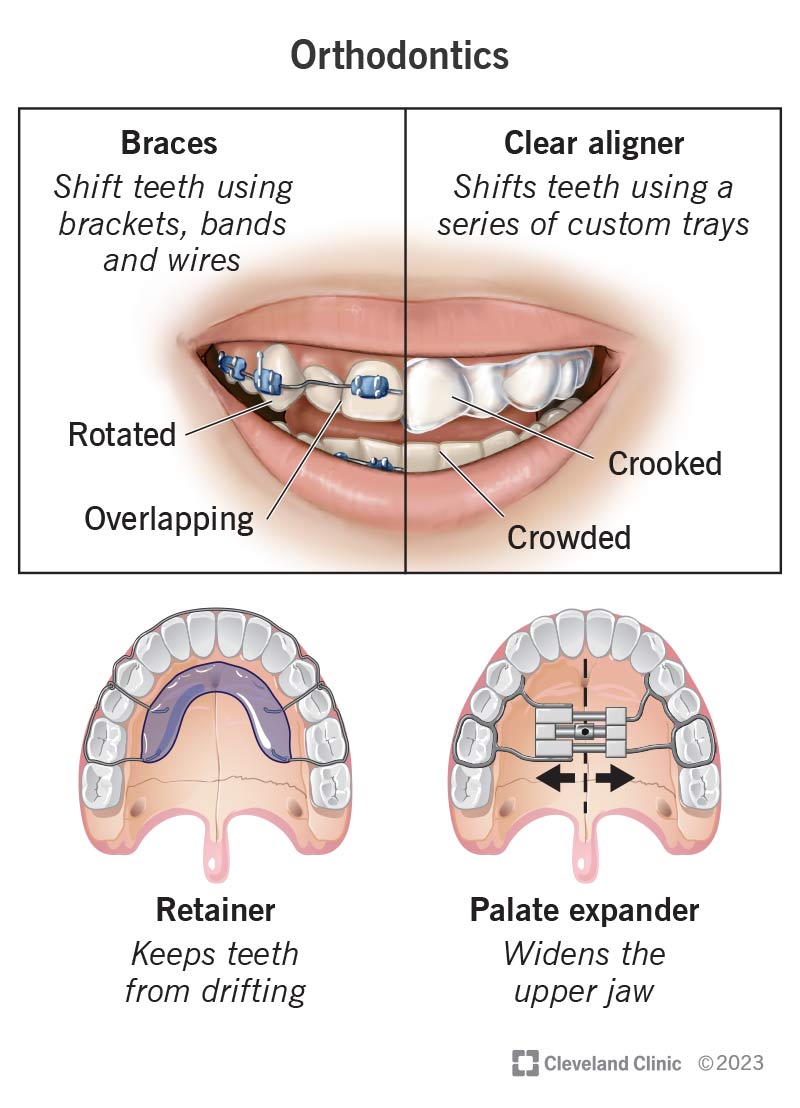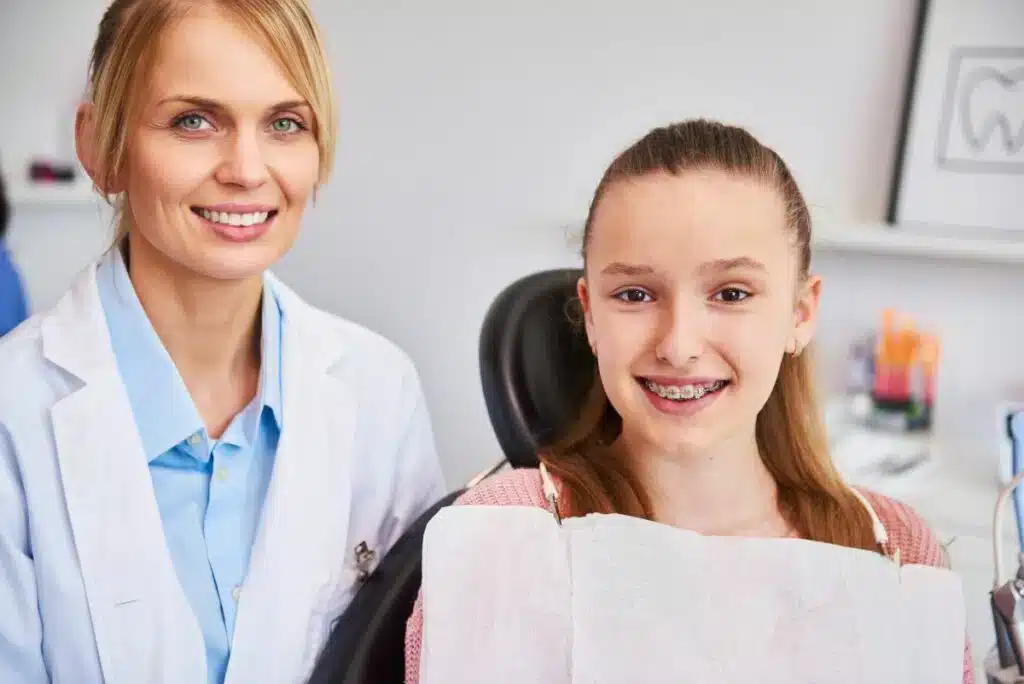The Of Causey Orthodontics
Causey Orthodontics Fundamentals Explained
Table of ContentsExcitement About Causey OrthodonticsThe 8-Minute Rule for Causey OrthodonticsThe Best Strategy To Use For Causey OrthodonticsThe 5-Second Trick For Causey OrthodonticsOur Causey Orthodontics Ideas
Overlooking occlusal connections, it was regular to get rid of teeth for a selection of oral concerns, such as malalignment or overcrowding. The principle of an intact teeth was not widely appreciated in those days, making bite relationships seem pointless. In the late 1800s, the concept of occlusion was vital for producing trustworthy prosthetic substitute teeth.As these principles of prosthetic occlusion progressed, it ended up being a vital tool for dental care. It was in 1890 that the job and effect of Dr. Edwards H. Angle began to be really felt, with his contribution to modern-day orthodontics especially noteworthy. Focused on prosthodontics, he educated in Pennsylvania and Minnesota prior to directing his attention in the direction of oral occlusion and the therapies needed to preserve it as a normal problem, therefore becoming understood as the "papa of modern-day orthodontics".

The concept of perfect occlusion, as postulated by Angle and integrated into a classification system, allowed a change in the direction of treating malocclusion, which is any kind of discrepancy from regular occlusion. Having a full set of teeth on both arcs was very demanded in orthodontic treatment as a result of the demand for exact partnerships in between them.
About Causey Orthodontics
As occlusion ended up being the crucial concern, facial proportions and visual appeals were disregarded - affordable orthodontist near me. To accomplish excellent occlusals without using external pressures, Angle postulated that having excellent occlusion was the very best method to get maximum facial visual appeals. With the passing of time, it became rather evident that also an exceptional occlusion was not ideal when considered from an aesthetic viewpoint
Charles Tweed in America and Raymond Begg in Australia (who both researched under Angle) re-introduced dentistry extraction right into orthodontics during the 1940s and 1950s so they could boost face esthetics while likewise guaranteeing far better security concerning occlusal relationships. In the postwar period, cephalometric radiography started to be used by orthodontists for measuring modifications in tooth and jaw placement triggered by growth and treatment. It ended up being noticeable that orthodontic treatment can change mandibular advancement, bring about the development of useful jaw orthopedics in Europe and extraoral pressure actions in the United States. These days, both functional home appliances and extraoral devices are used around the globe with the purpose of changing growth patterns and forms. Going after real, or at least boosted, jaw partnerships had ended up being the primary objective of treatment by the mid-20th century.
Excitement About Causey Orthodontics
 The American Journal of Orthodontics was produced for this objective in 1915; before it, there were no clinical objectives to follow, neither any kind of exact category system and braces that did not have features. Up until the mid-1970s, dental braces were made by wrapping steel around each tooth. With innovations in adhesives, it came to be feasible to instead bond steel brackets to the teeth.
The American Journal of Orthodontics was produced for this objective in 1915; before it, there were no clinical objectives to follow, neither any kind of exact category system and braces that did not have features. Up until the mid-1970s, dental braces were made by wrapping steel around each tooth. With innovations in adhesives, it came to be feasible to instead bond steel brackets to the teeth.Andrews provided an informative definition of the perfect occlusion in long-term teeth. This has had significant impacts on orthodontic treatments that are provided routinely, and these are: 1. Appropriate interarchal relationships 2. Right crown angulation (suggestion) 3. Correct crown inclination (torque) 4. No rotations 5. Limited contact points 6. Flat Contour of Spee (0.02.5 mm), and based on these principles, he found a therapy system called the straight-wire home appliance system, or the pre-adjusted edgewise system.
The benefit of the layout hinges on its brace and archwire mix, which requires only very little wire bending from the orthodontist or medical professional (best orthodontist near me). It's aptly called hereafter function: the angle of the slot and density of the brace base eventually figure out where each tooth is situated with little requirement for added control
Not known Incorrect Statements About Causey Orthodontics
Both of these systems used the same braces for every tooth and demanded the bending of an archwire in three planes for situating teeth in their wanted placements, with these bends determining supreme placements. When it concerns orthodontic appliances, they are separated right into two kinds: detachable and fixed. Detachable devices can be handled and off by the client as required.

Therefore, practically all contemporary fixed home appliances can be considered variations on this edgewise device system. Early 20th-century orthodontist Edward Angle made a significant contribution to the globe of dental care. He developed 4 distinct appliance systems that have actually been made use of as the basis for lots of orthodontic therapies today, disallowing a couple of exemptions.
Causey Orthodontics Can Be Fun For Everyone

The wire finished in a string, and to move it forward, a flexible nut was used, which permitted an increase in circumference. By ligation, each specific tooth was attached to this extensive archwire (orthodontist services). Because of its limited series of activity, Angle was unable to attain precise tooth positioning with an E-arch
These tubes held a soldered pin, which might be repositioned at each visit in order to move them in place. Dubbed the "bone-growing appliance", this device was thought to encourage much healthier bone growth as a result of its potential for transferring pressure straight to the origins. However, implementing it showed troublesome in truth.